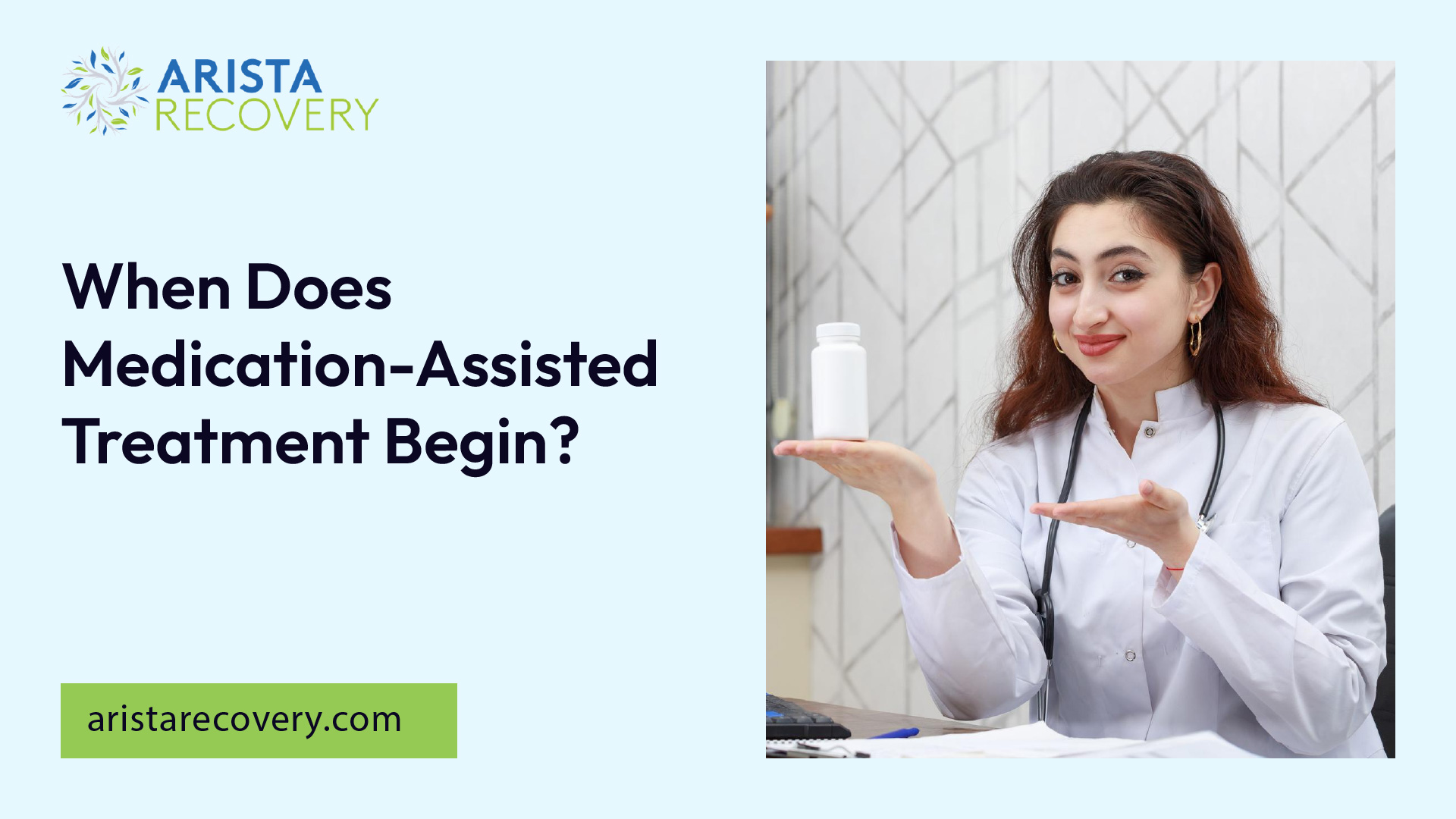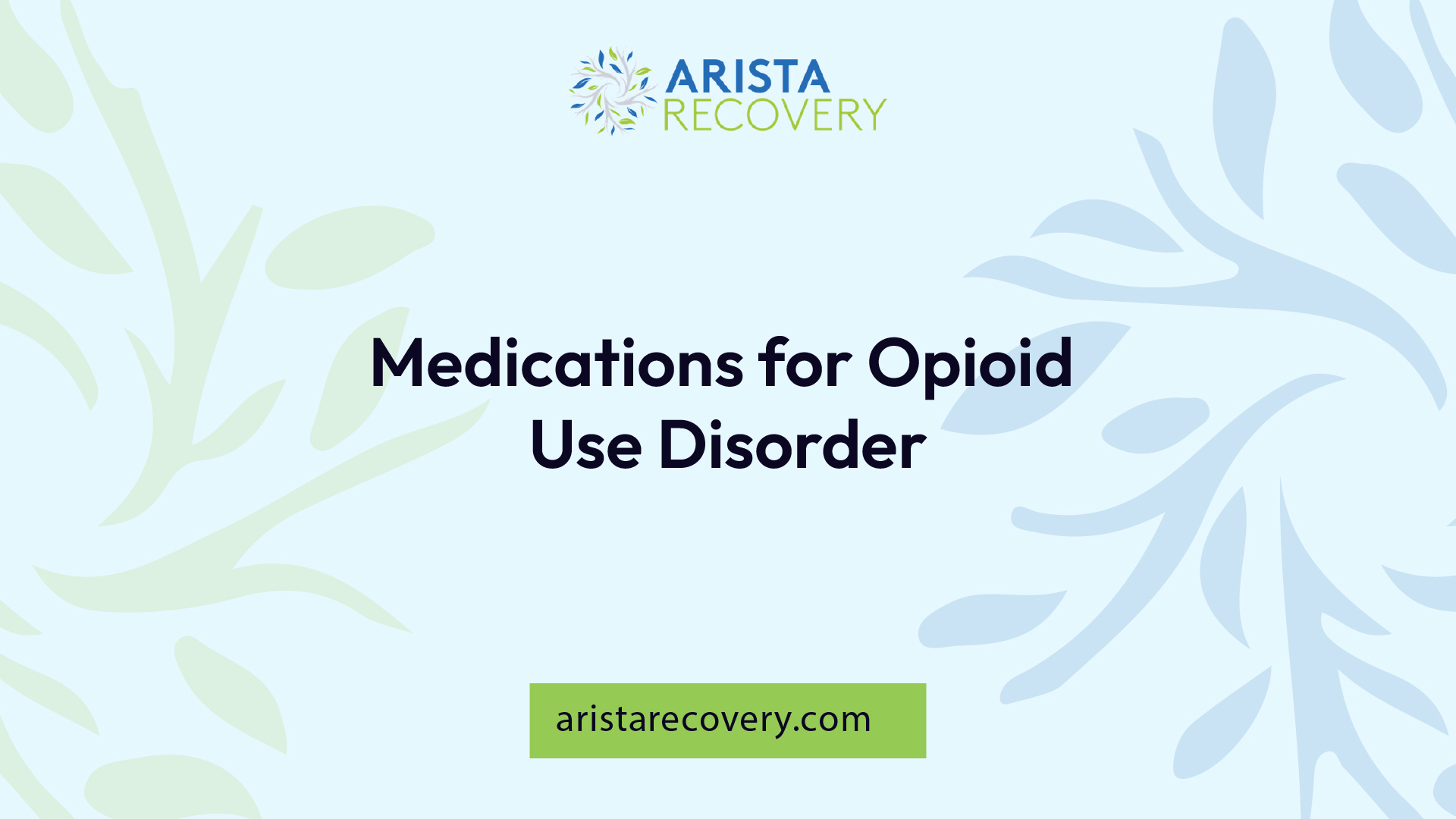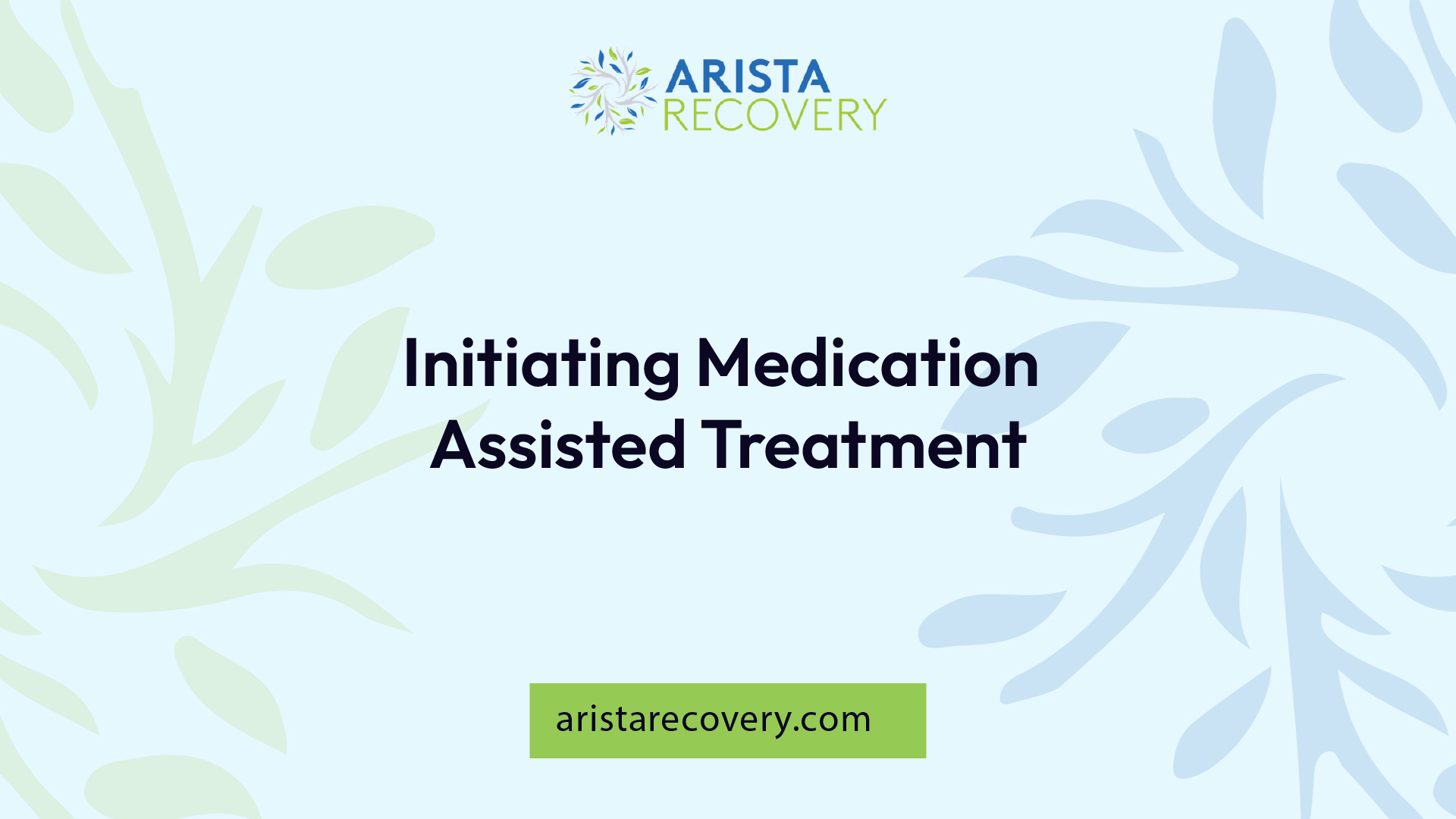When Does Medication-Assisted Treatment Begin?


Understanding Medication Assisted Treatment
Addressing substance use disorders effectively requires a comprehensive approach that combines social support, counseling, and medication. This approach is known as Medication Assisted Treatment (MAT), a method that has proven effective in the treatment of opioid use disorders.
Overview of MAT
Medication-assisted treatment (MAT) is a holistic approach to treating substance use disorders. It combines medication, counseling, and social support services, providing a well-rounded strategy to help individuals manage their addiction. The primary goal of MAT is to reduce the health and social impacts of substance use disorders, including opioid use disorder, by reducing opioid use and related harms.
The first significant advancement in the treatment of opioid addiction occurred with the approval of methadone in 1974, marking the beginning of Methadone Assisted Treatment [2]. Since then, additional medications have been approved for the treatment of opioid use disorders, broadening the scope and effectiveness of MAT.
For more information on how MAT differs from other treatment approaches, refer to our articles on the difference between MAT and OTP, and the difference between MAT and SUD.
FDA-Approved Medications
The U.S. Food and Drug Administration (FDA) has approved several medications for the treatment of Opioid Use Disorder (OUD): methadone, buprenorphine, naltrexone, and lofexidine, all of which have been demonstrated to be safe and effective.
- Methadone: A long-acting full opioid agonist, methadone helps manage cravings, reduce withdrawal symptoms, and normalize the body's functioning impaired by illicit opioids.
- Buprenorphine: A partial opioid agonist, buprenorphine binds to opioid receptors, reducing cravings and withdrawal symptoms without the dramatic highs and lows of illicit drug abuse.
- Naltrexone: An opioid antagonist, naltrexone blocks opioid receptors, decreasing cravings and preventing the "high" from opioid drugs [1].
- Lofexidine: This medication helps to reduce the severity of withdrawal symptoms but does not help to reduce cravings.
By understanding the different medications available for OUD treatment, individuals can better discuss options with healthcare providers and make informed decisions about their recovery process. For more information on the outcomes of MAT, refer to our article on what are the outcomes of MAT.

Medications for Opioid Use Disorder
Understanding the different types of medications utilized in the treatment of opioid use disorder (OUD) can be critical when someone is considering medication assisted treatment. We'll look at three FDA-approved medications: Methadone, Buprenorphine, and Naltrexone.
Methadone Treatment History
Methadone has been employed in treating opioid use disorder since 1947, marking it as the medication with the longest history of use in this context. Methadone became a key medication for maintenance therapy in the treatment of opioid addiction during the 1960s for its longer-acting and more effective properties when taken orally. Patients stabilized on methadone doses of 80 to 120 mg/day showed improvements in social functioning and eliminated illicit opioid use.
Methadone can be initiated at any time during OUD treatment, but achieving a therapeutic dose, which needs to be individualized to decrease cravings and prevent a return to other opioid use, requires days to weeks.
Buprenorphine Effectiveness
First approved in 2002 for the treatment of OUD, Buprenorphine is available in various forms such as Probuphine®, Sublocade™, Bunavail®, Suboxone®, and Zubsolv®. Buprenorphine, a partial opioid agonist, binds to opioid receptors, reducing cravings and withdrawal symptoms without the dramatic highs and lows of illicit drug abuse. It is considered effective for less advanced cases of substance use disorder.
A National Institute on Drug Abuse (NIDA) study demonstrated that once treatment is initiated, a buprenorphine/naloxone combination is similarly effective in treating OUD as an extended-release naltrexone formulation.
Naltrexone Administration
The FDA approved Naltrexone in an extended-release injectable form (XR-NTX) in 2010 for OUD treatment. Naltrexone showed effectiveness in increasing opioid abstinence and treatment retention. As an opioid antagonist, Naltrexone blocks opioid receptors, decreasing cravings and preventing the "high" from opioid drugs. Naltrexone is administered as a long-acting injectable, making it suitable for patients who struggle with regular medication intake.
Each of these medications has a unique role and method of action in treating OUD. Understanding their differences is key in determining the best course of action when medication assisted treatment begins. For more thorough information on medication assisted treatment, please visit our article on what are the outcomes of mat.

Initiating Medication Assisted Treatment
Initiating medication assisted treatment (MAT) is a significant step towards recovery from opioid use disorder (OUD). This process involves the use of FDA-approved medications, such as Methadone, Buprenorphine, and Naltrexone, each of which has unique considerations and protocols for initiation.
Starting Methadone
Methadone, an FDA-approved medication for OUD treatment, can be initiated at any time during OUD treatment. However, it requires days to weeks to achieve a therapeutic dose, which needs to be individualized to decrease cravings and prevent a return to other opioid use.
Methadone treatment comes with a major risk of opioid overdose death within the first two weeks of treatment, after which the risk decreases significantly. It's important to note that the risk of overdose is higher among patients taking other sedatives, but methadone should not be withheld from these patients as the overdose risk is even higher for those not on medication for OUD.
Outpatient methadone treatment in the United States can only be administered to people enrolled in state- and federally certified opioid treatment programs (OTPs), historically called methadone clinics. Most patients are required to visit an OTP in person every day to receive their daily dose. For more information on the difference between MAT and OTP, check this page difference between mat and otp.
Buprenorphine Treatment Initiation
Buprenorphine, a partial opioid agonist, is another FDA-approved medication for OUD treatment. It binds to opioid receptors, reducing cravings and withdrawal symptoms without the dramatic highs and lows of illicit drug abuse. Buprenorphine is considered effective for less advanced substance use disorder cases.
Buprenorphine was first approved in 2002 for the treatment of opioid use disorder, available in various forms such as Probuphine®, Sublocade™, Bunavail®, Suboxone®, and Zubsolv®.
Naltrexone Therapy Commencement
Naltrexone, an opioid antagonist, is an FDA-approved medication for OUD treatment. It blocks opioid receptors, decreasing cravings and preventing the "high" from opioid drugs. Naltrexone is administered as a long-acting injectable, making it suitable for patients who struggle with regular medication intake.
Naltrexone in an extended-release injectable form (XR-NTX) was approved by the FDA in 2010 for opioid use disorder treatment, showing effectiveness in increasing opioid abstinence and treatment retention.
The initiation of MAT is a significant step in managing OUD. It is important to understand the specific initiation processes and potential risks associated with each medication, to ensure the most effective approach to treatment. For more insights on the outcomes of MAT, please refer to this page what are the outcomes of mat.
Treatment Retention and Outcomes
An integral part of the recovery process in Medication Assisted Treatment (MAT) is treatment retention. This section explores the significance of retention in MAT, factors that influence it, and evidence-based approaches to improve retention rates.
Importance of Retention in MAT
Retention in MAT for opioid use disorder (OUD) has been linked to better outcomes, including reduced mortality rates and less need for high-intensity treatment. Despite these benefits, treatment engagement and retention in treatment are persistently low. It's essential to understand the factors that influence retention to improve these rates and ensure the effectiveness of MAT programs.
Factors Influencing Retention
Several variables can affect retention in substance use disorder (SUD) treatment, including treatment for OUD. These factors can be grouped into client characteristics, provider or service delivery characteristics, setting-based factors, and external variables such as cross-system collaboration or payment policies.
Client characteristics that often impede retention in treatment include:
- Younger age
- Co-occurring mental disorders and SUDs
- Multiple substances use
- Less robust social determinants of health
- Geographic impediments to care
- Pregnancy
- Benzodiazepine use
- Lack of understanding of the treatment process
- Stigma and shame
- Criminal justice system involvement
- Lack of social supports, transportation, and childcare
Understanding these factors is crucial in developing treatment plans that address these challenges and improve retention rates. For a detailed look at the difference between MAT and other treatment options, check out our articles on the difference between MAT and OTP and the difference between MAT and SUD.
Evidence-Based Approaches
To address retention in MAT for OUD, several evidence-based approaches can be utilized. These include providing multiple medication options at the same site, offering MAT at effective doses quickly, focusing on developing a solid therapeutic relationship early in treatment, using team-based approaches, and providing psychosocial supports such as individual and group therapy, case management, financial counseling, acupuncture, and patient advocacy [7].
In terms of reimbursement policies, contractual incentives have shown mixed results. Policies should encourage and reward continuity of care as well as retention in treatment. Consistent coverage of SUD treatment medications, similar to coverage of medications for other chronic conditions, is also recommended.
By understanding the importance of retention in MAT and implementing evidence-based approaches to improve it, better outcomes can be achieved for individuals undergoing treatment. For more information on the outcomes of MAT, visit our article on what are the outcomes of MAT.
Barriers to Medication Assisted Treatment
Despite the proven effectiveness of Medication Assisted Treatment (MAT), numerous barriers prevent its widespread adoption and implementation. These challenges range from cultural norms and regulatory restrictions to funding limitations and reimbursement policies.
Adoption Challenges
As per a report by NCBI, by 2009-2010, only 37.0% of publicly funded treatment centers in the US had adopted at least one medication for the treatment of substance use disorders (SUDs). This indicates that many patients in the publicly funded treatment system still lacked access to MAT.
Non-adopting programs cited a lack of access to medical personnel and funding barriers as the primary reasons for not implementing medications for SUDs. State regulations prohibiting the use of medications due to lack of medical staff were also a significant factor. These findings reveal the gap between the recognized effectiveness of MAT and its actual implementation in treatment programs.
Program Implementation Barriers
Programs that had adopted SUD medications were significantly more likely to be government-owned, located within a healthcare setting, accredited by an external organization, offer detoxification services, and have larger numbers of counselors, physicians, and nurses on staff compared to non-adopting programs.
These findings suggest that the implementation of MAT in a program is closely tied to the resources available to that program. Programs with more resources, such as medical personnel and accreditation, are more likely to adopt MAT. This highlights the need for increasing resources and support for treatment centers to facilitate the adoption of MAT.
Reimbursement Policies
Reimbursement policies play a significant role in the adoption and implementation of MAT. Approaches such as contractual incentives have shown mixed results in the recent literature. Reimbursement policies should encourage and reward continuity of care as well as retention in treatment.
Pharmaceutical coverage of SUD treatment medications should also be consistent with coverage of medications for other chronic conditions. This not only encourages the adoption of MAT but also ensures that patients have access to the necessary medications as part of their treatment plan.
Despite these challenges, it's important to note that MAT is still considered the standard of care for the treatment of addictive disorders. For more information about MAT, read our article on medication assisted treatment.
History of Medication Assisted Treatment
The journey of Medication Assisted Treatment (MAT) has been marked by advancements and discoveries that have played a significant role in addiction treatment. The approval of new medications over the years has broadened the scope of MAT, providing more options for individuals seeking help for addiction.
Evolution of MAT
The first breakthrough in the treatment of opioid addiction occurred with the approval of methadone in 1974, marking the inception of Methadone Assisted Treatment (MAT). Despite initial controversies, methadone showed promising results in helping patients abstain from heroin use, maintain employment, and take care of their families.
Methadone became a key medication for maintenance therapy in the treatment of opioid addiction. Patients stabilized on methadone doses of 80 to 120 mg/day experienced improved social functioning and elimination of illicit opioid use.
Approval of Additional Medications
By the mid-2000s, the opioid epidemic emphasized the need for medical treatment of addictive disorders. This led to the approval of additional medications for opioid use disorders, including buprenorphine and the monthly injection of naltrexone (Vivitrol). The term MAT was broadened to include all FDA-approved medications for addictive disorders, including alcohol use disorder [2].
The National Institute on Drug Abuse (NIDA) completed initial testing of naltrexone to treat opioid addiction in the early 1980s, leading to its FDA approval in 1984. Naltrexone proved to be most useful for highly motivated patients who have undergone detoxification from opioids and need additional support to avoid relapse.
Current FDA-Approved Medications
As of now, there are four FDA-approved medications for the treatment of opioid use disorder: methadone, buprenorphine, naltrexone, and lofexidine. Additionally, there are three FDA-approved medications for the treatment of alcohol use disorder: disulfiram, naltrexone, and acamprosate.
These developments in the field of MAT have provided a wider range of options for individuals seeking recovery from substance use disorders. For more information on the initiation and outcomes of MAT, visit our articles on when medication assisted treatment begins and what are the outcomes of mat.
References
[1]: https://www.bhgrecovery.com/blog/medications-used-in-mat
[4]: https://www.gatehousetreatment.com/blog/history-abstinence-based-medication-assisted-treatment-mat/
You’re not alone in this.
When mental health challenges and addiction intersect, it can feel isolating. At Arista, we offer compassionate, evidence-based, and trauma-informed care to help you heal, grow, and move forward.
You’re not alone in this.
When mental health challenges and addiction intersect, it can feel isolating. At Arista, we offer compassionate, evidence-based, and trauma-informed care to help you heal, grow, and move forward.
Support that moves with you.
You’ve taken a brave first step. At Arista Recovery, we’re here to help you continue with best-in-class care designed for long-term healing and support.
.webp)






